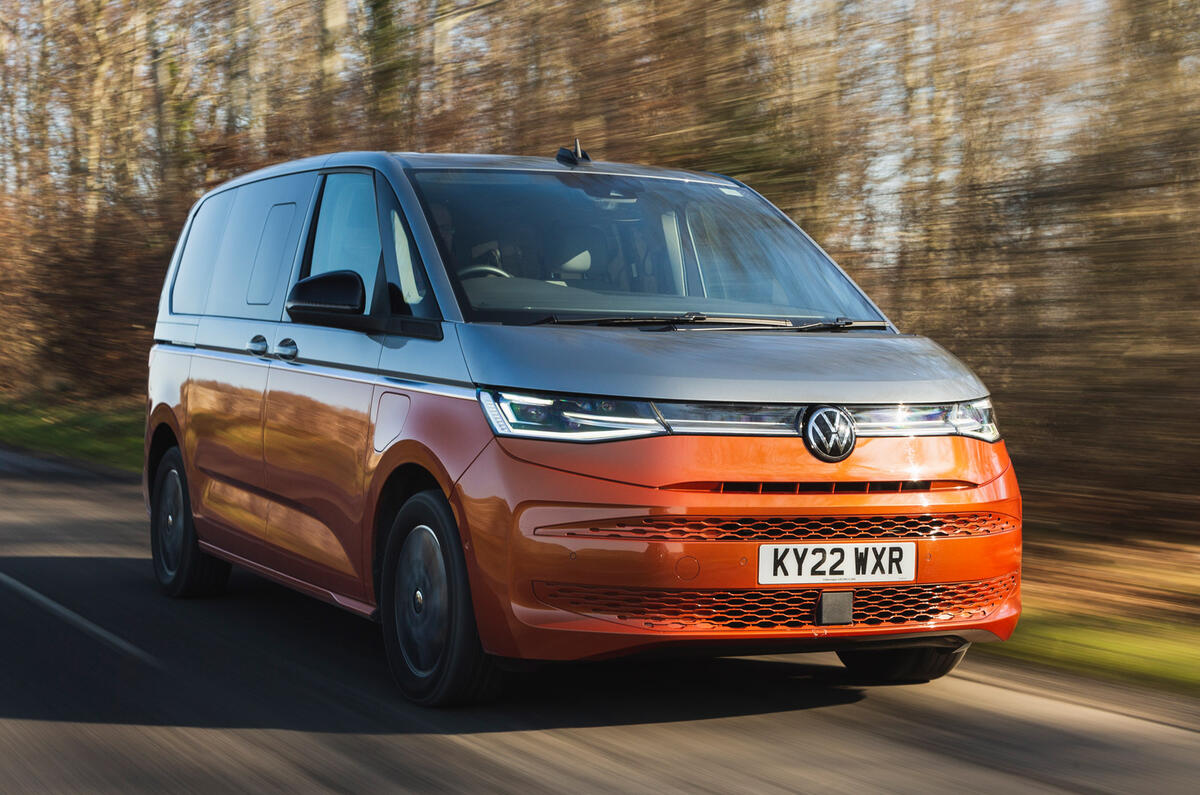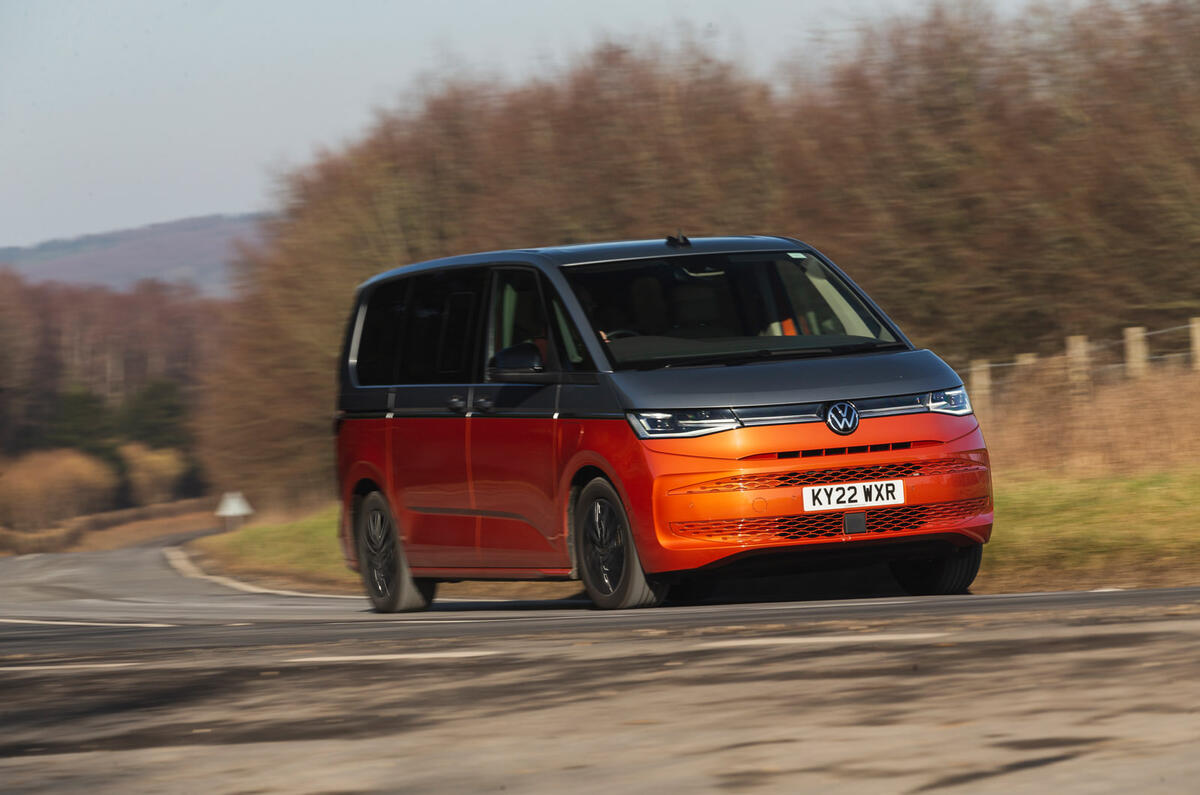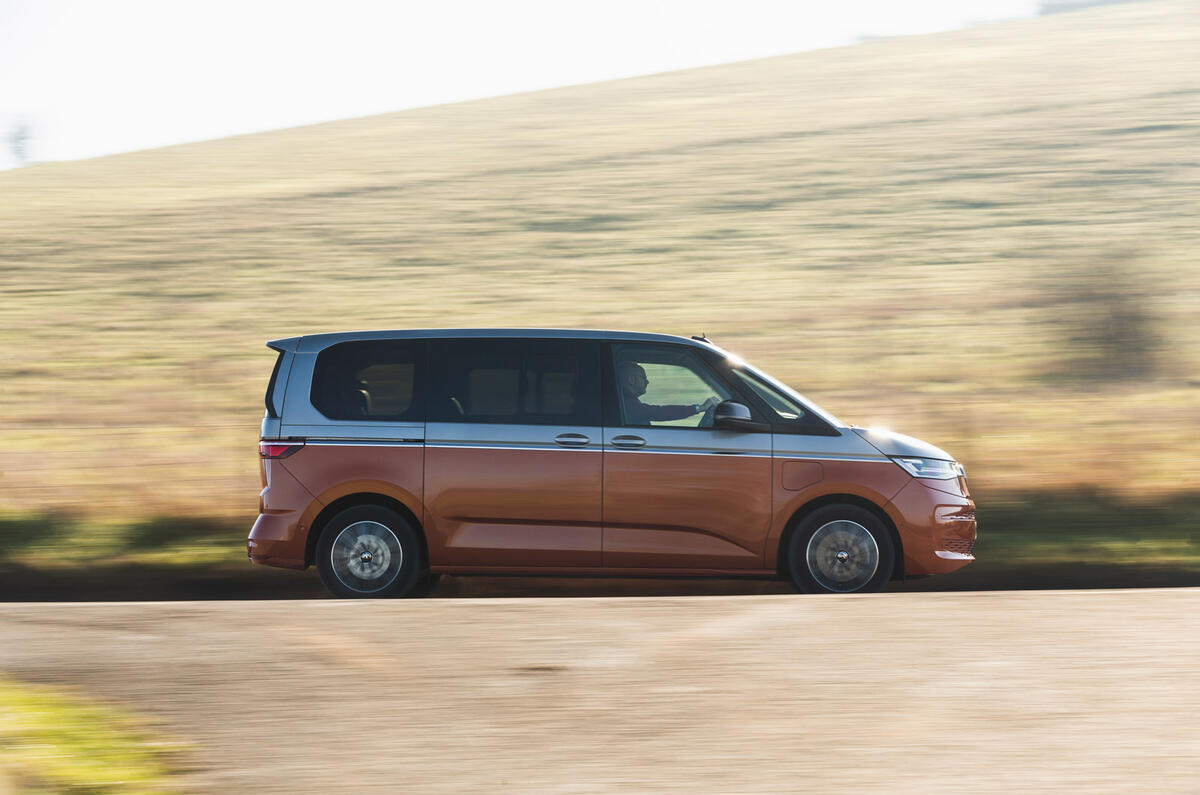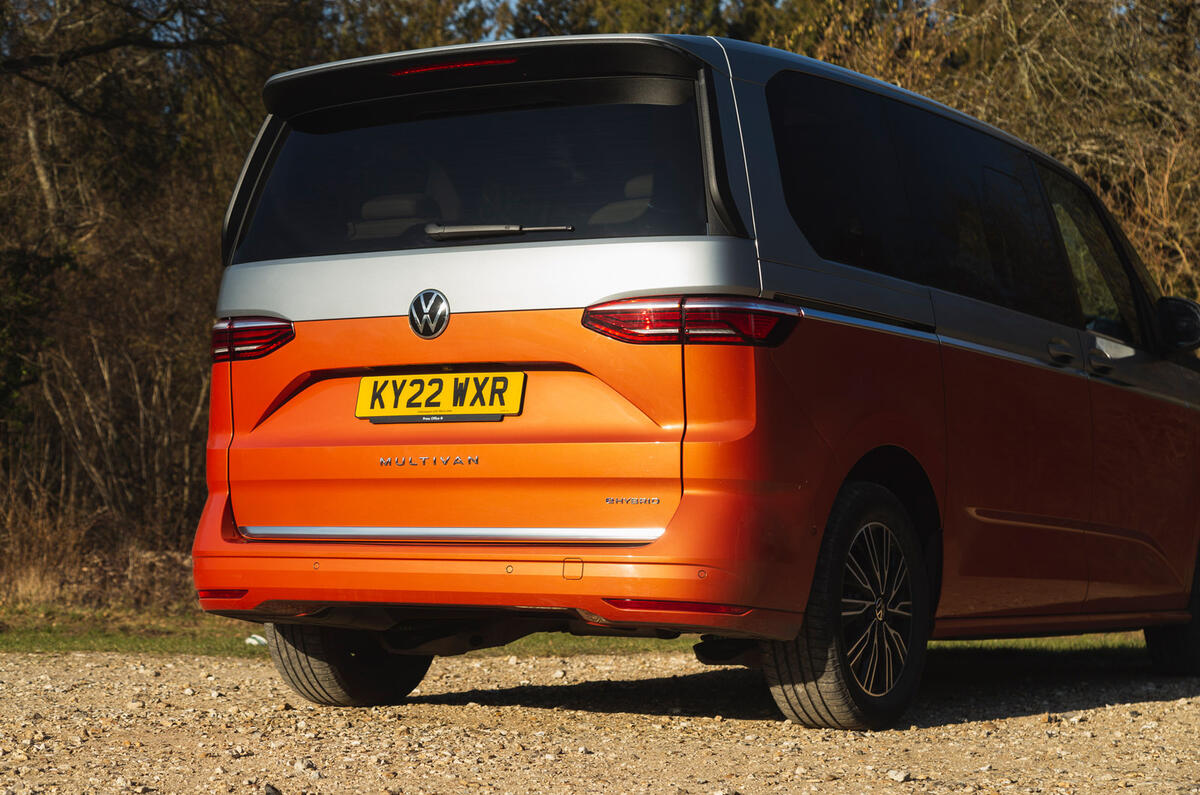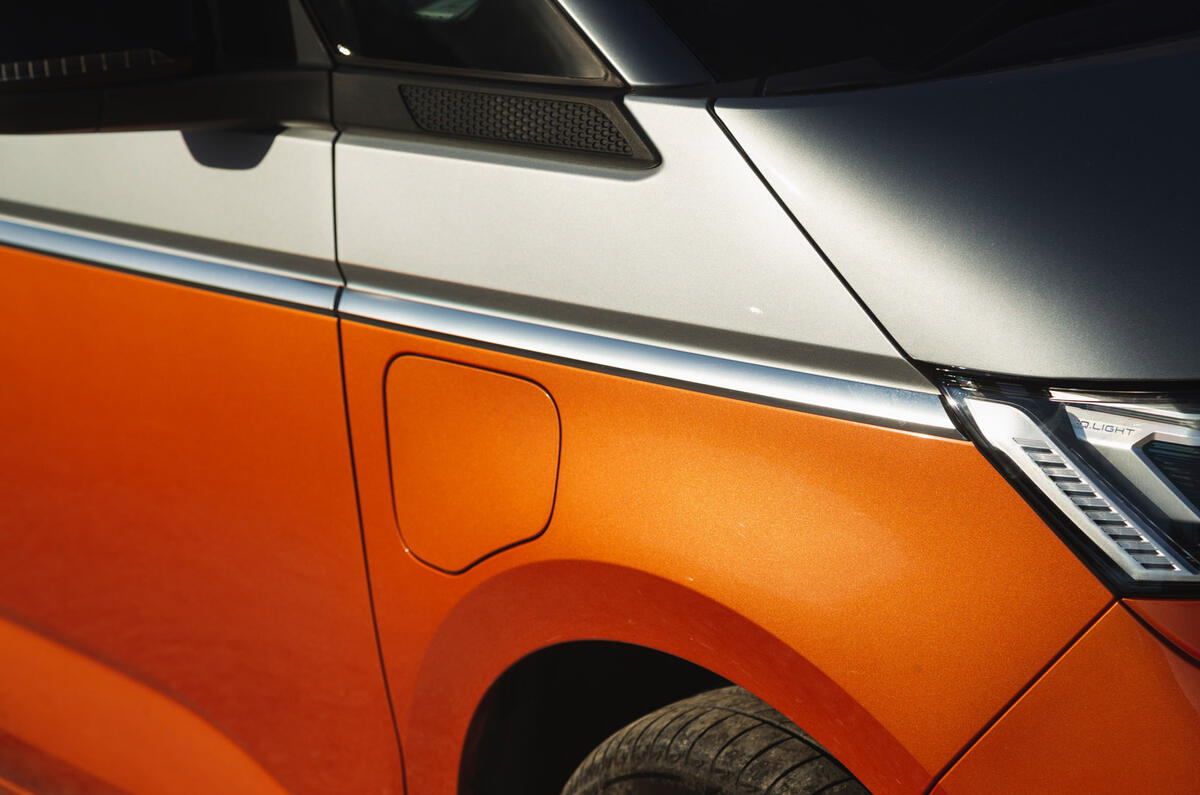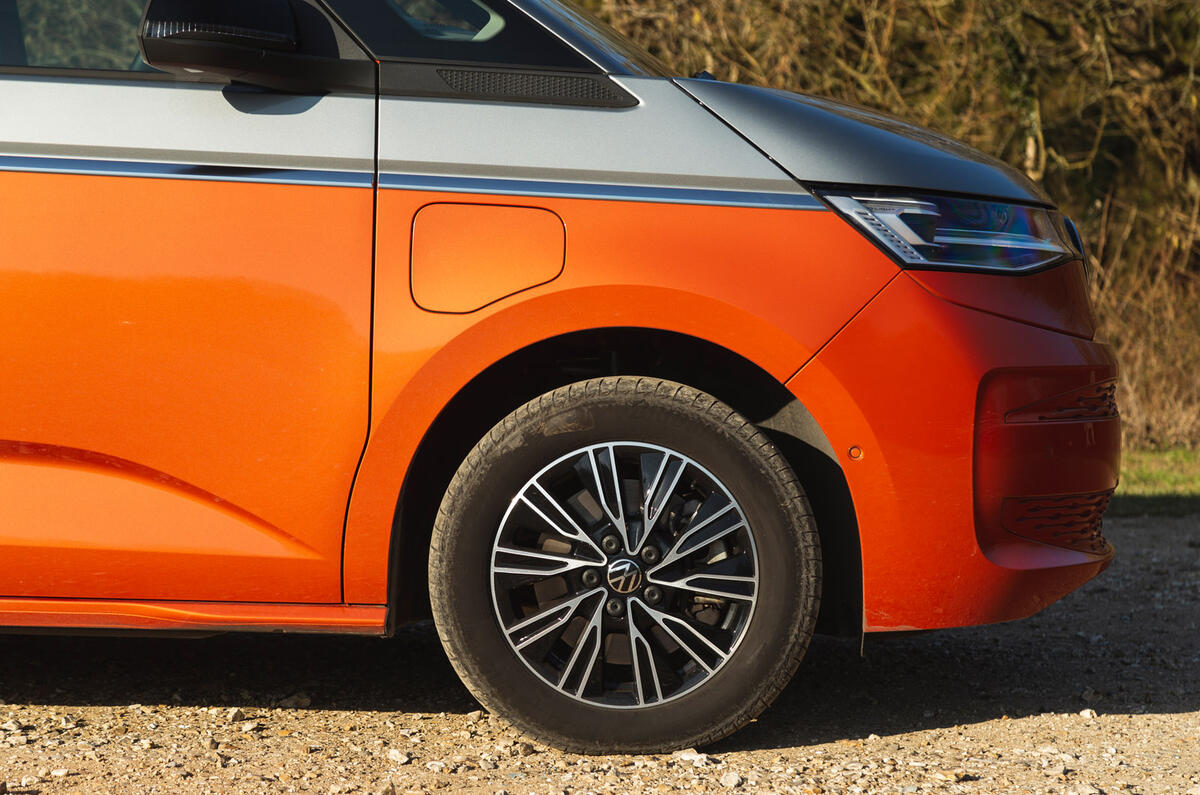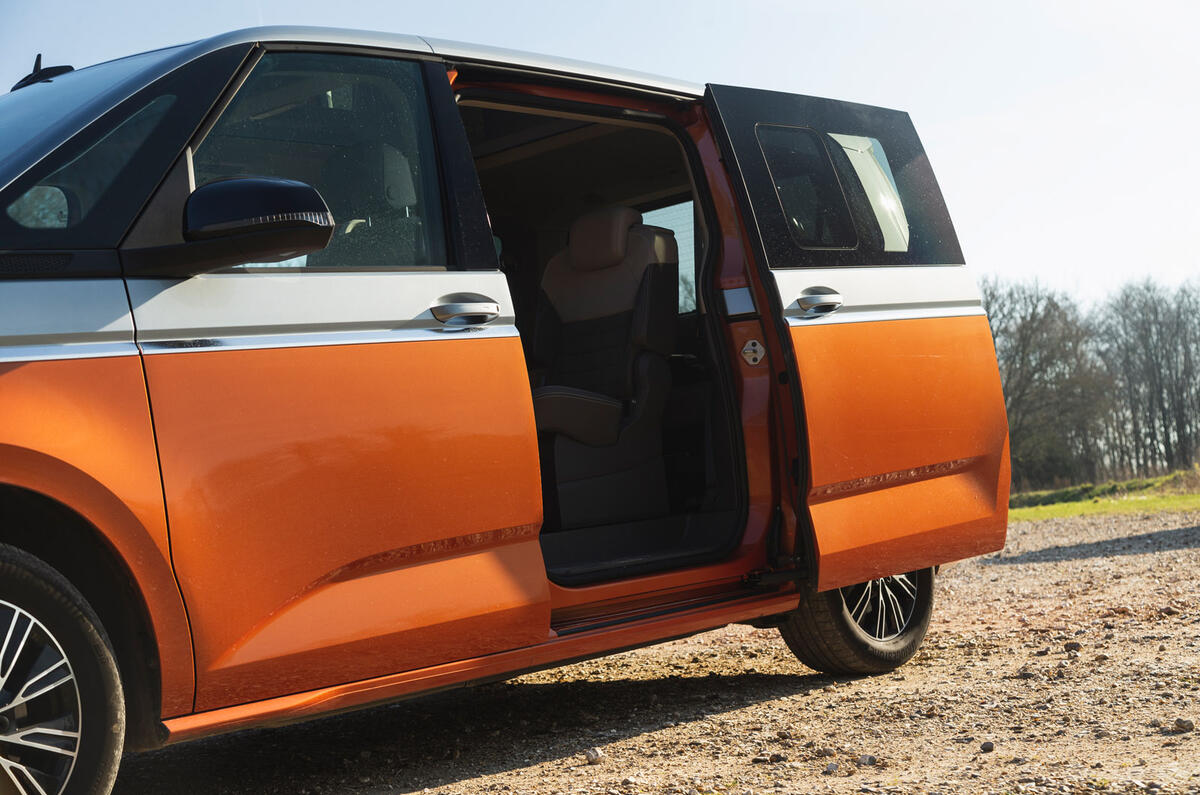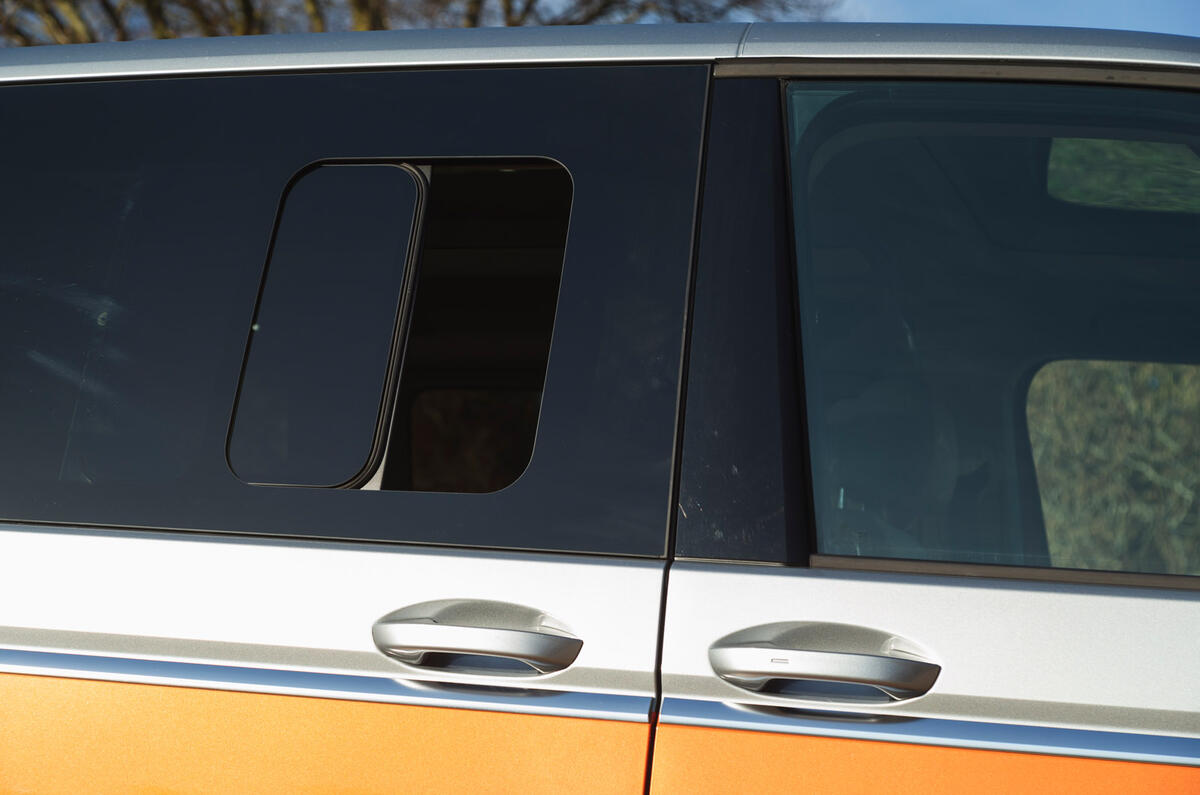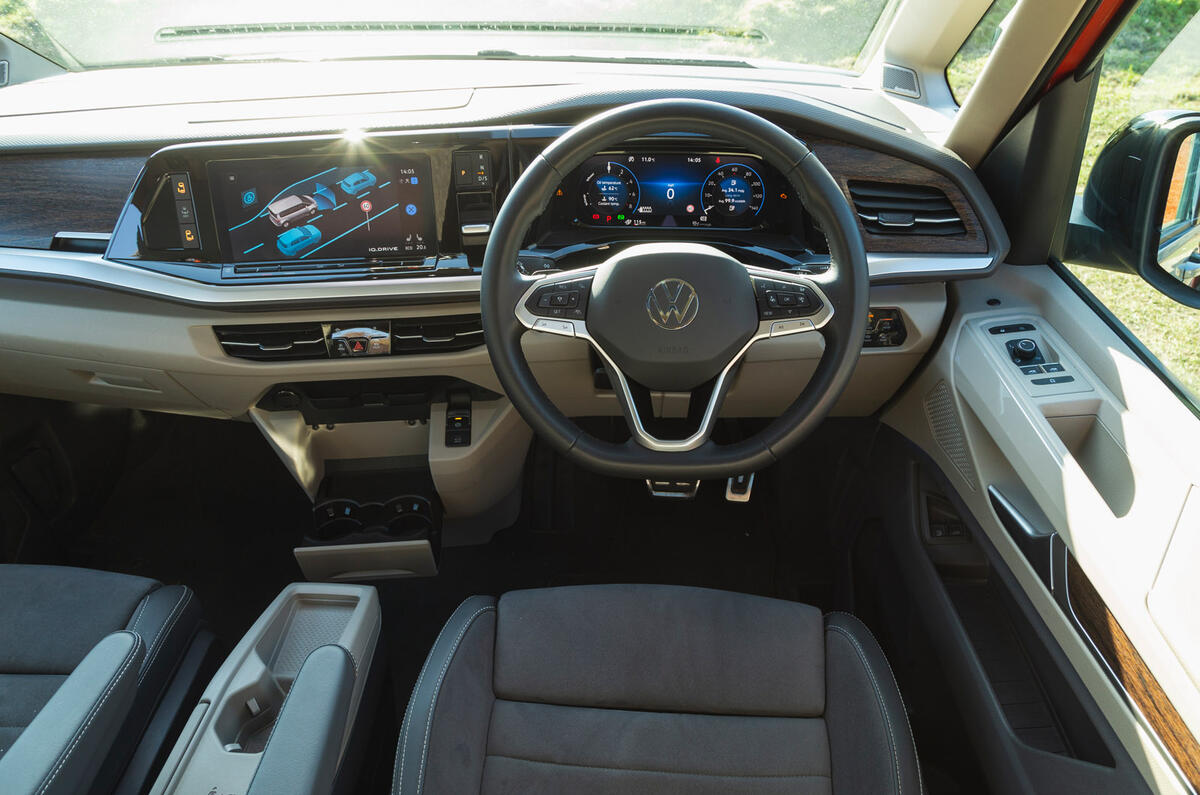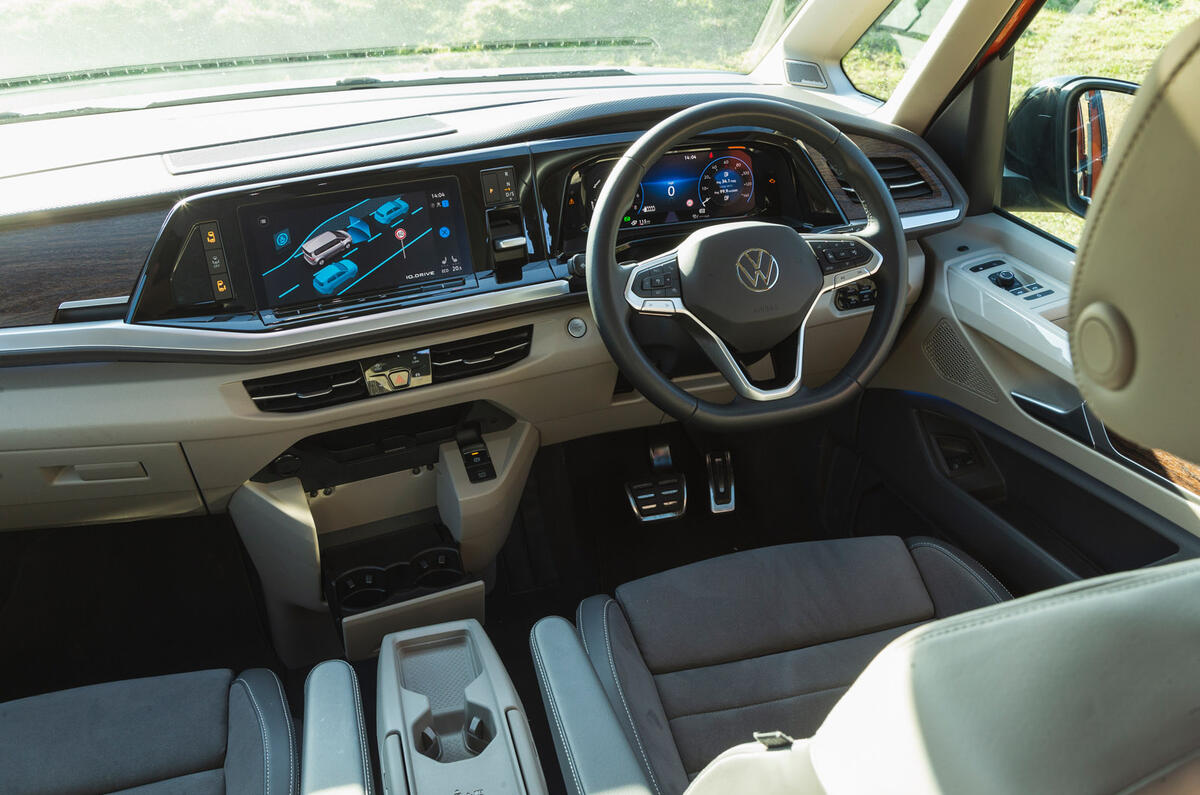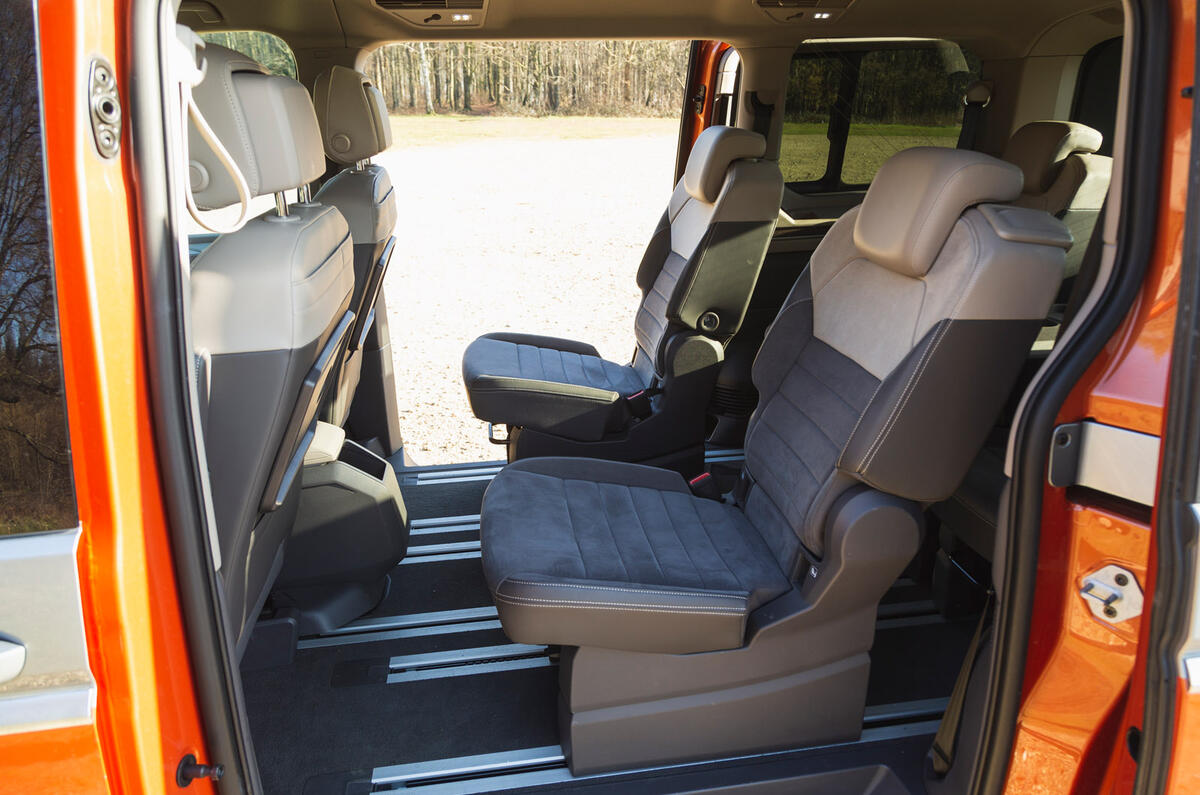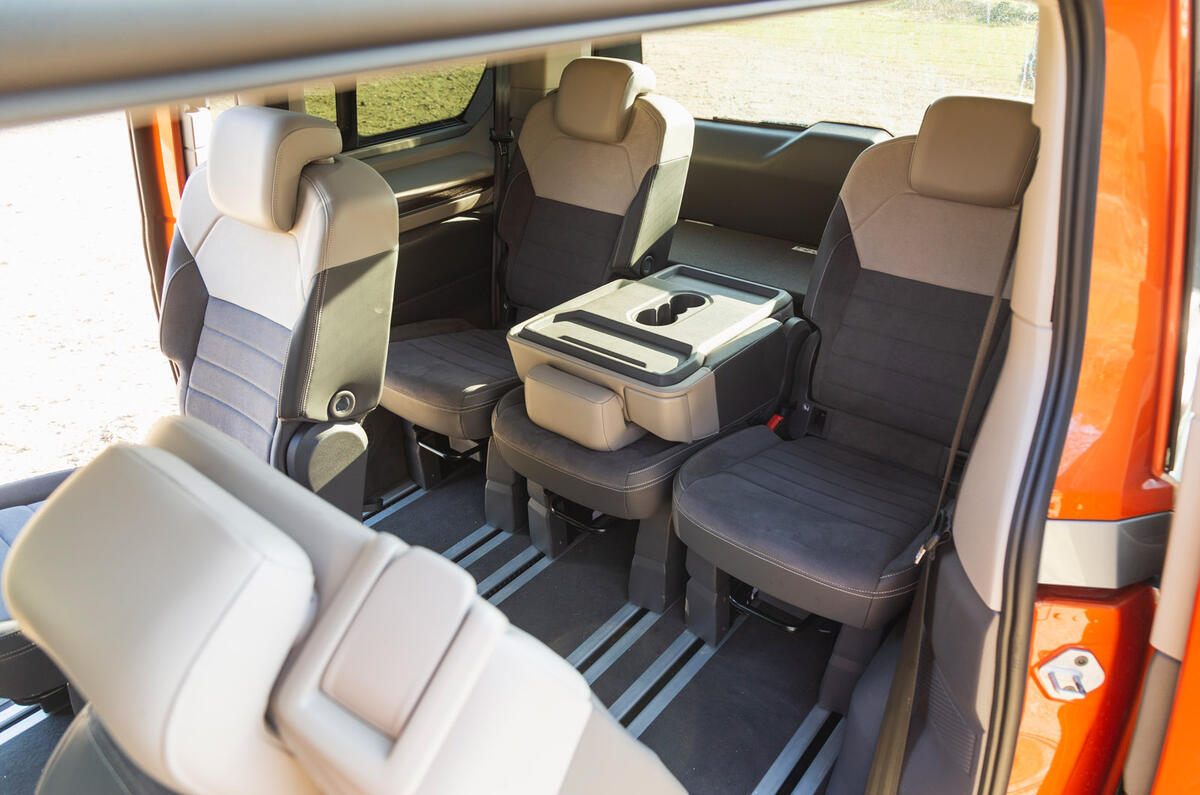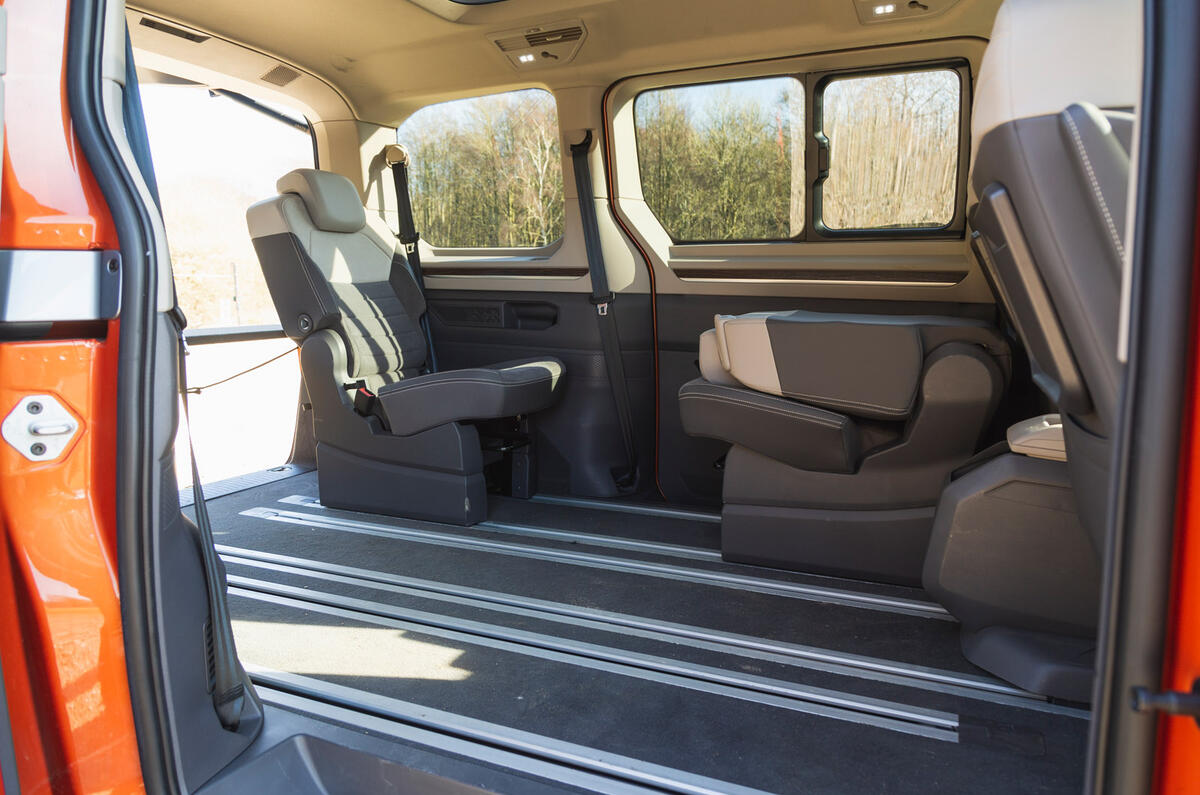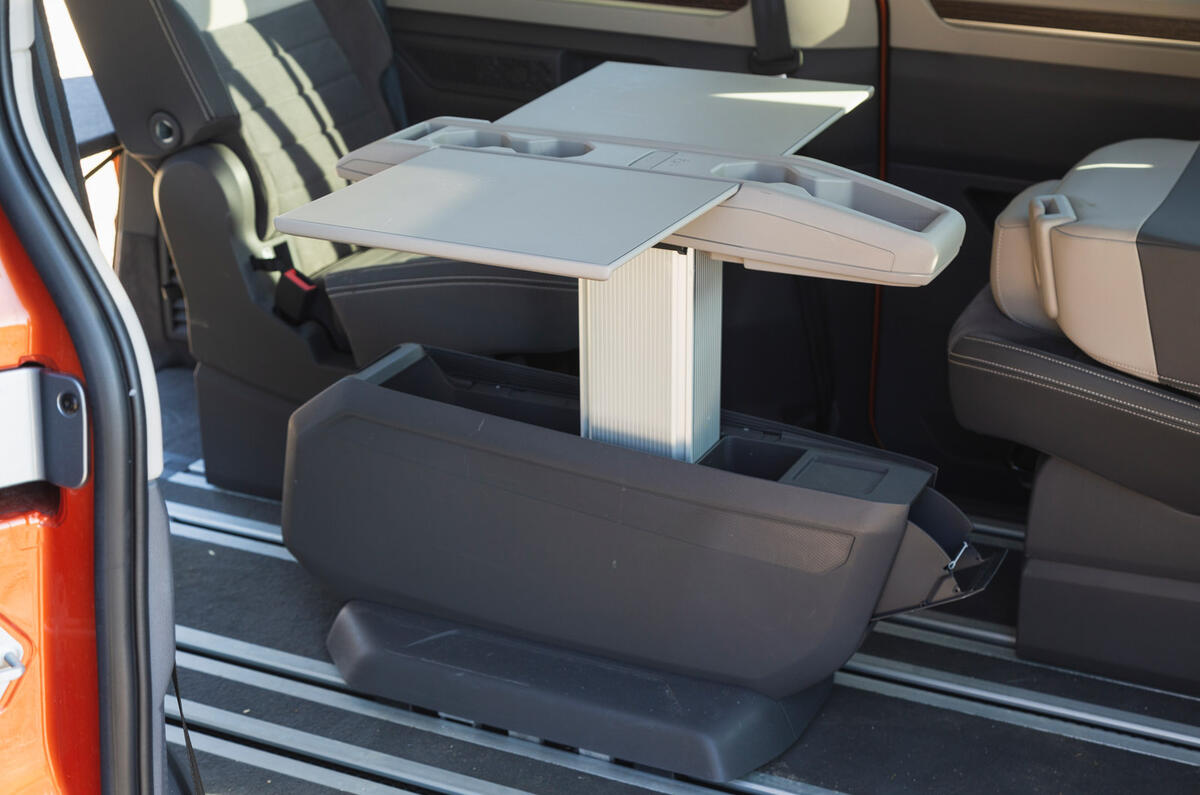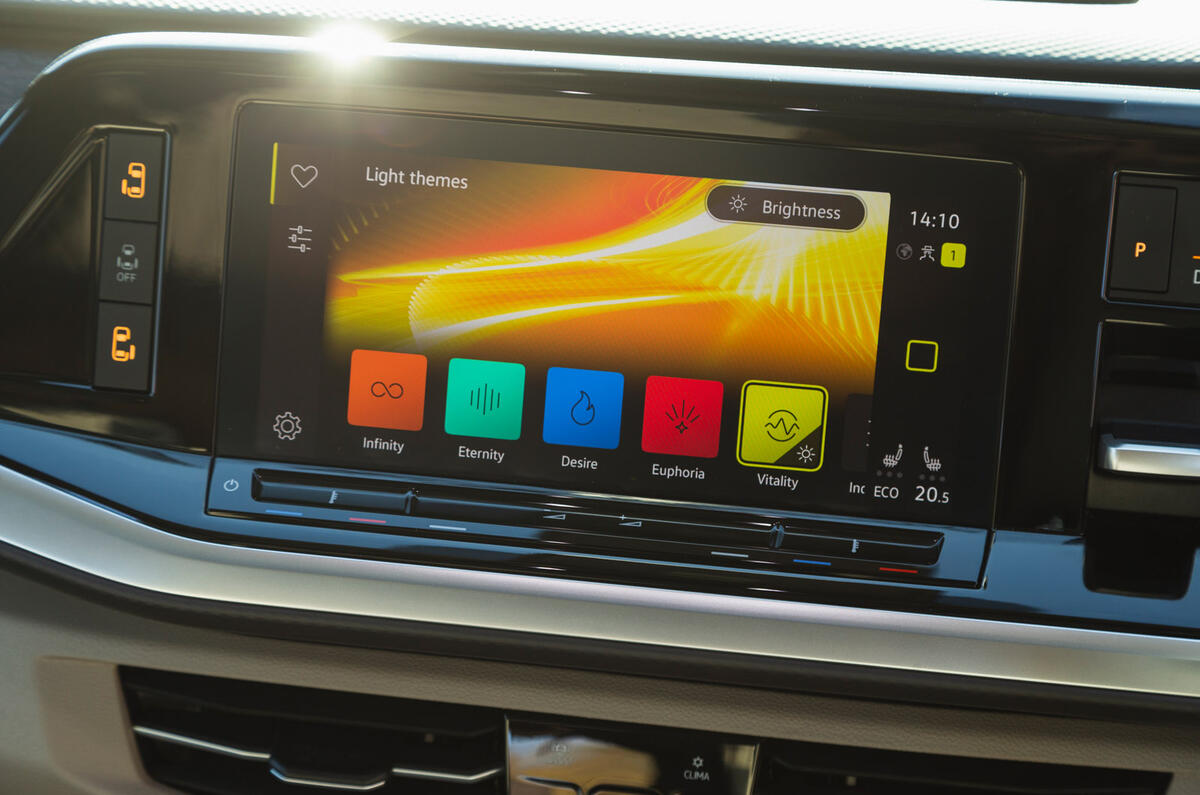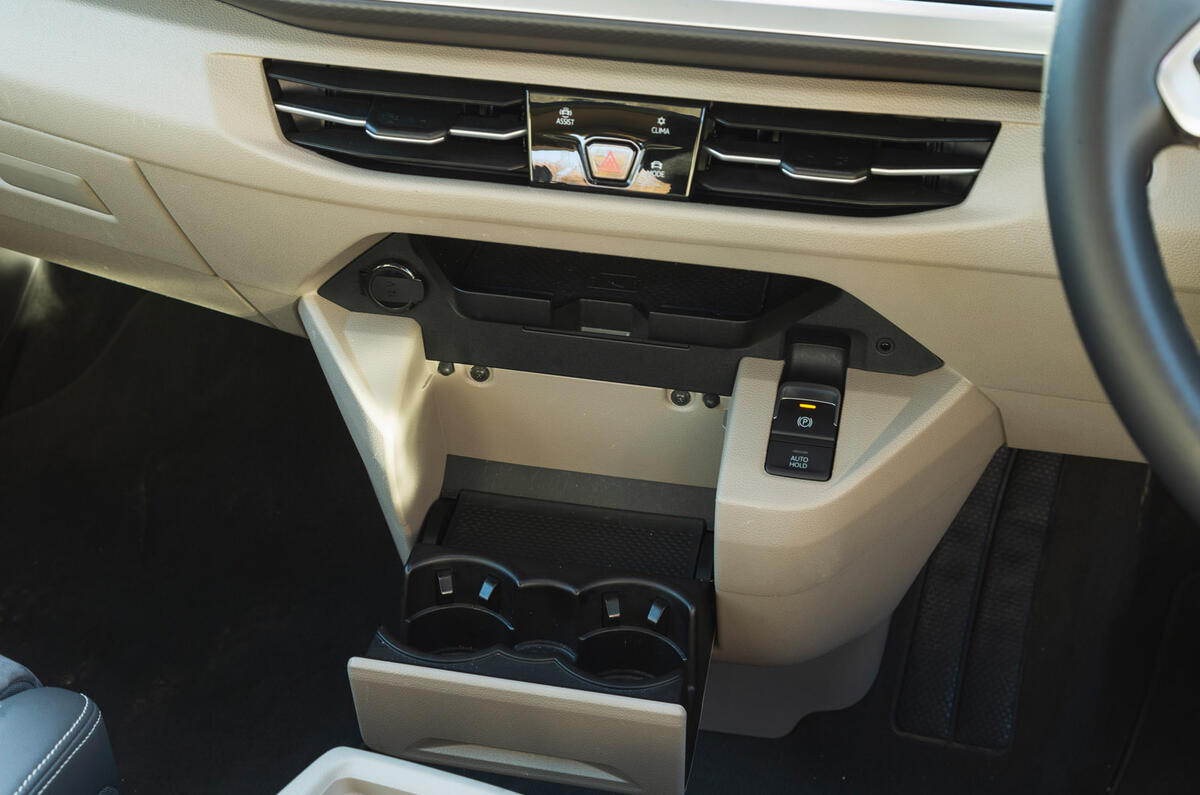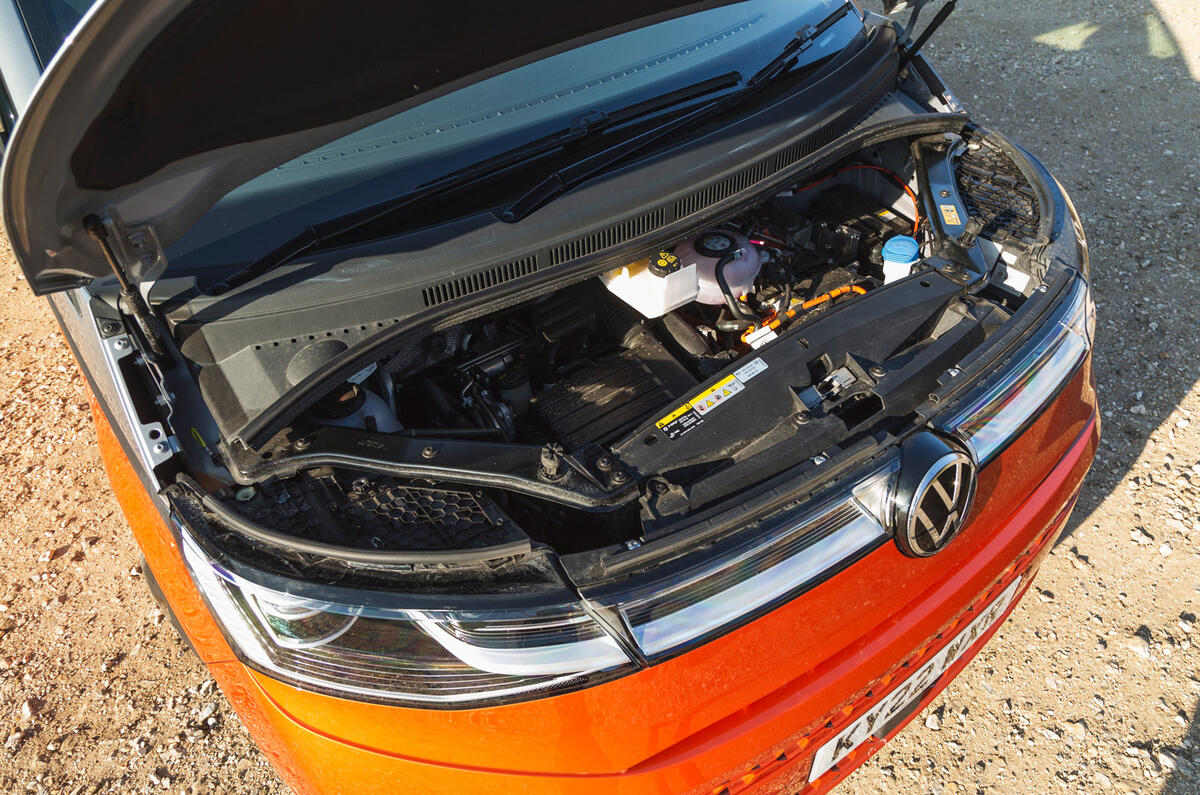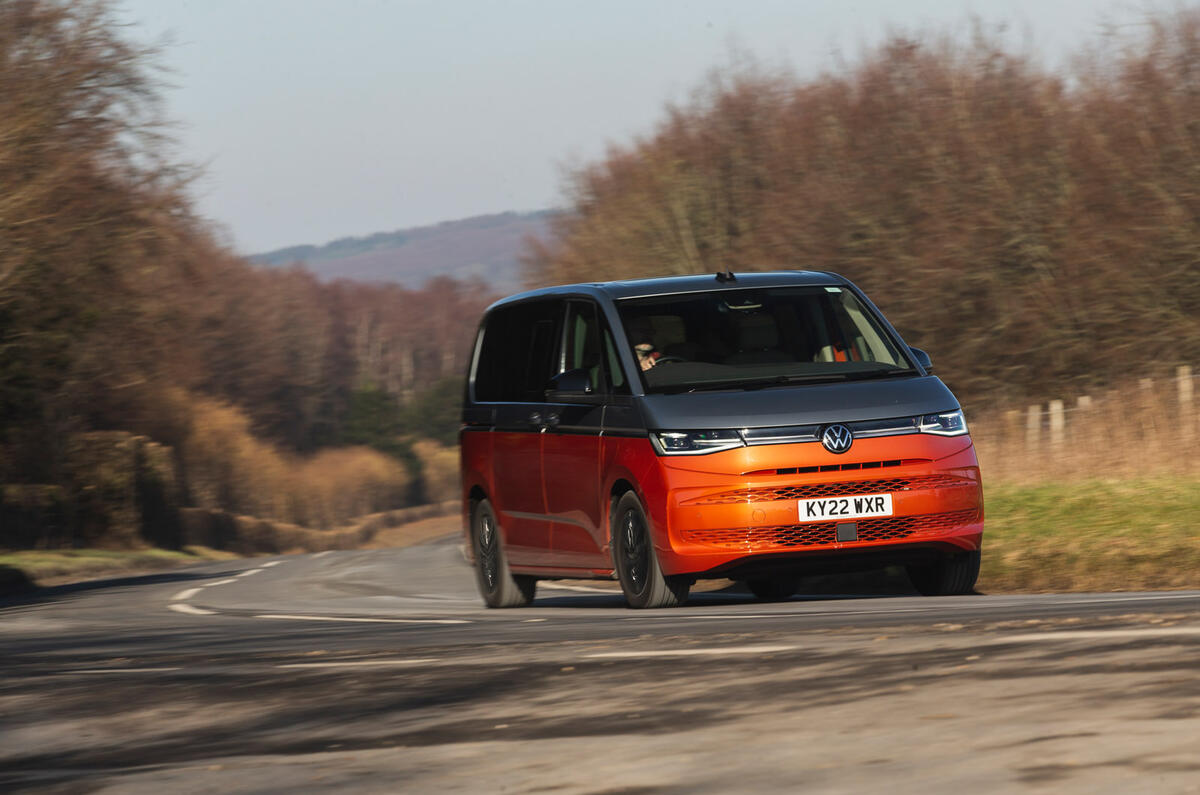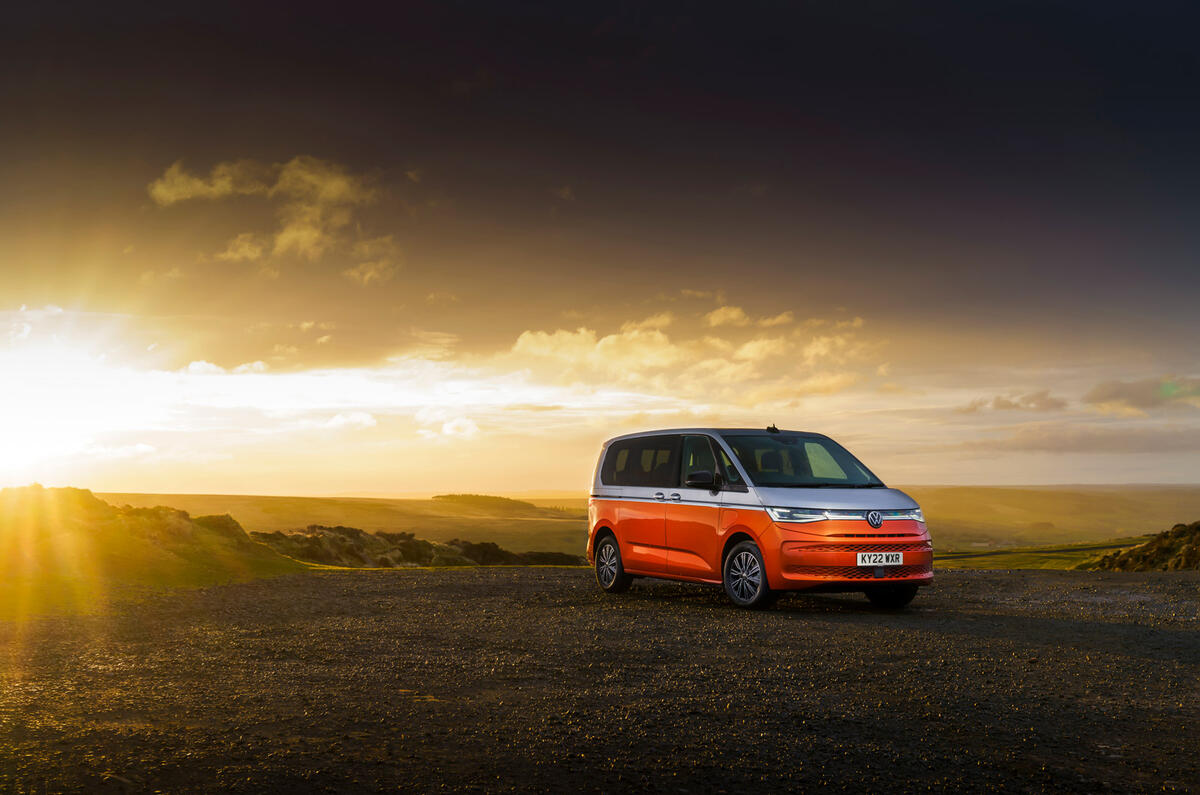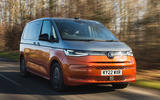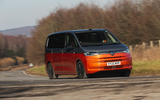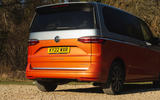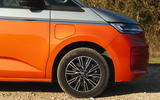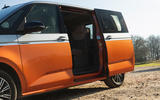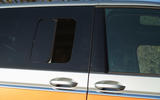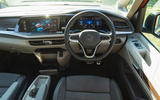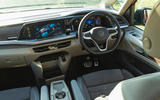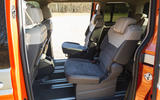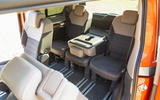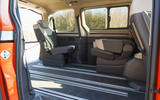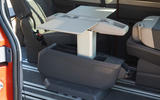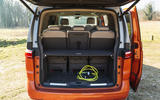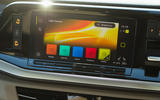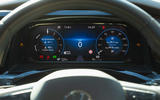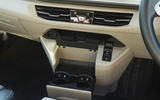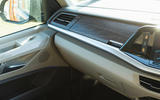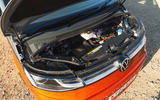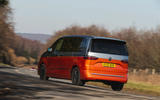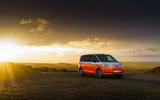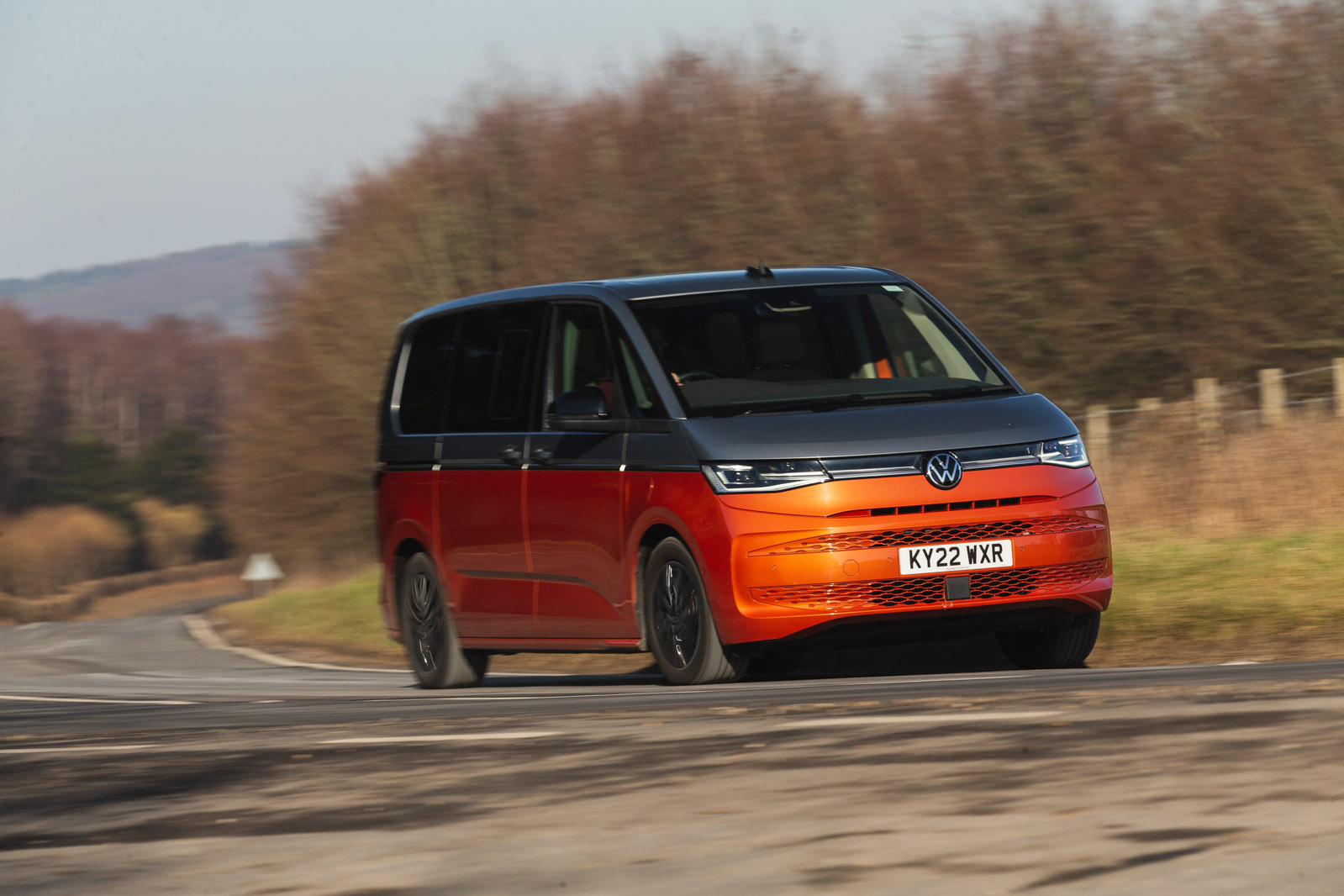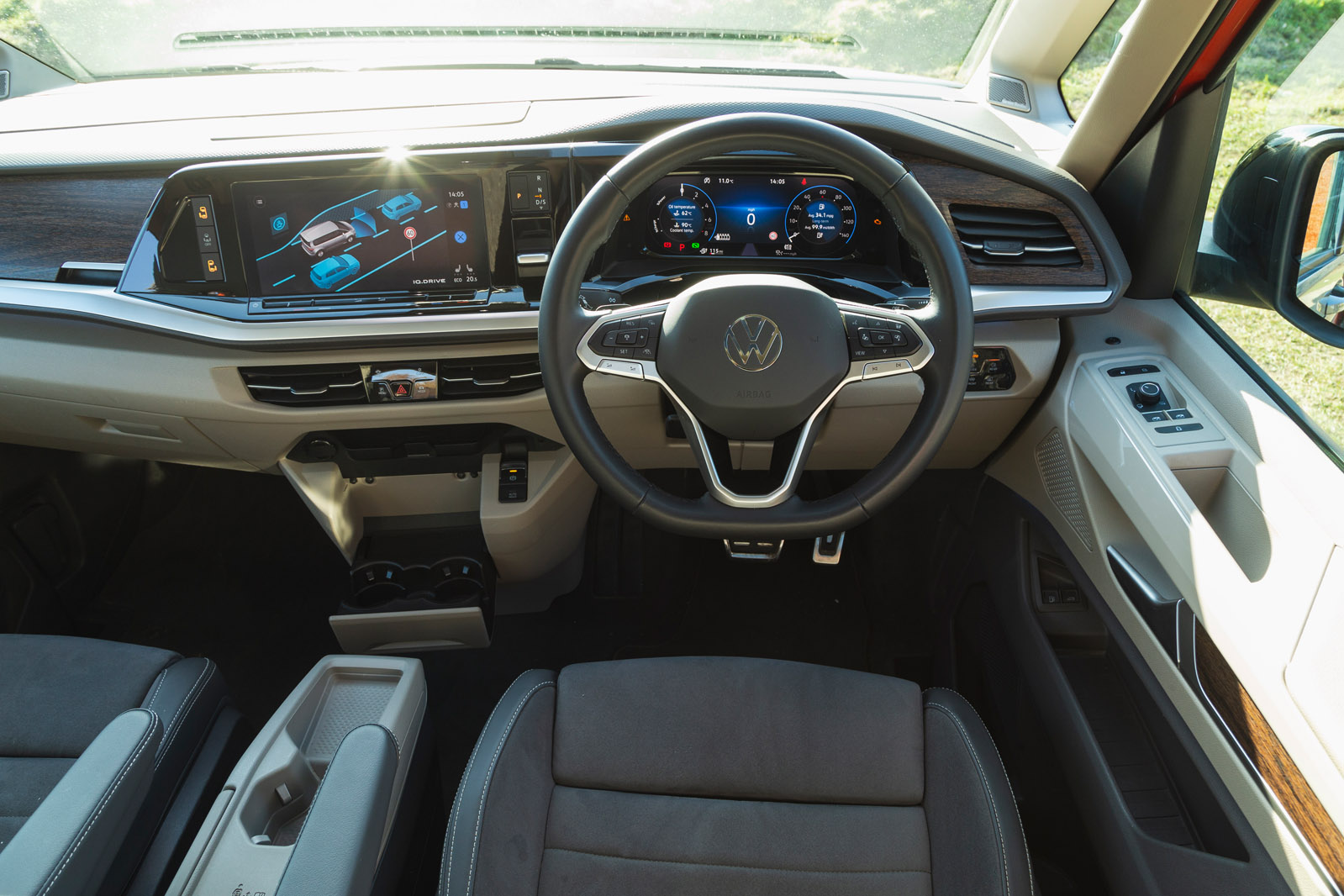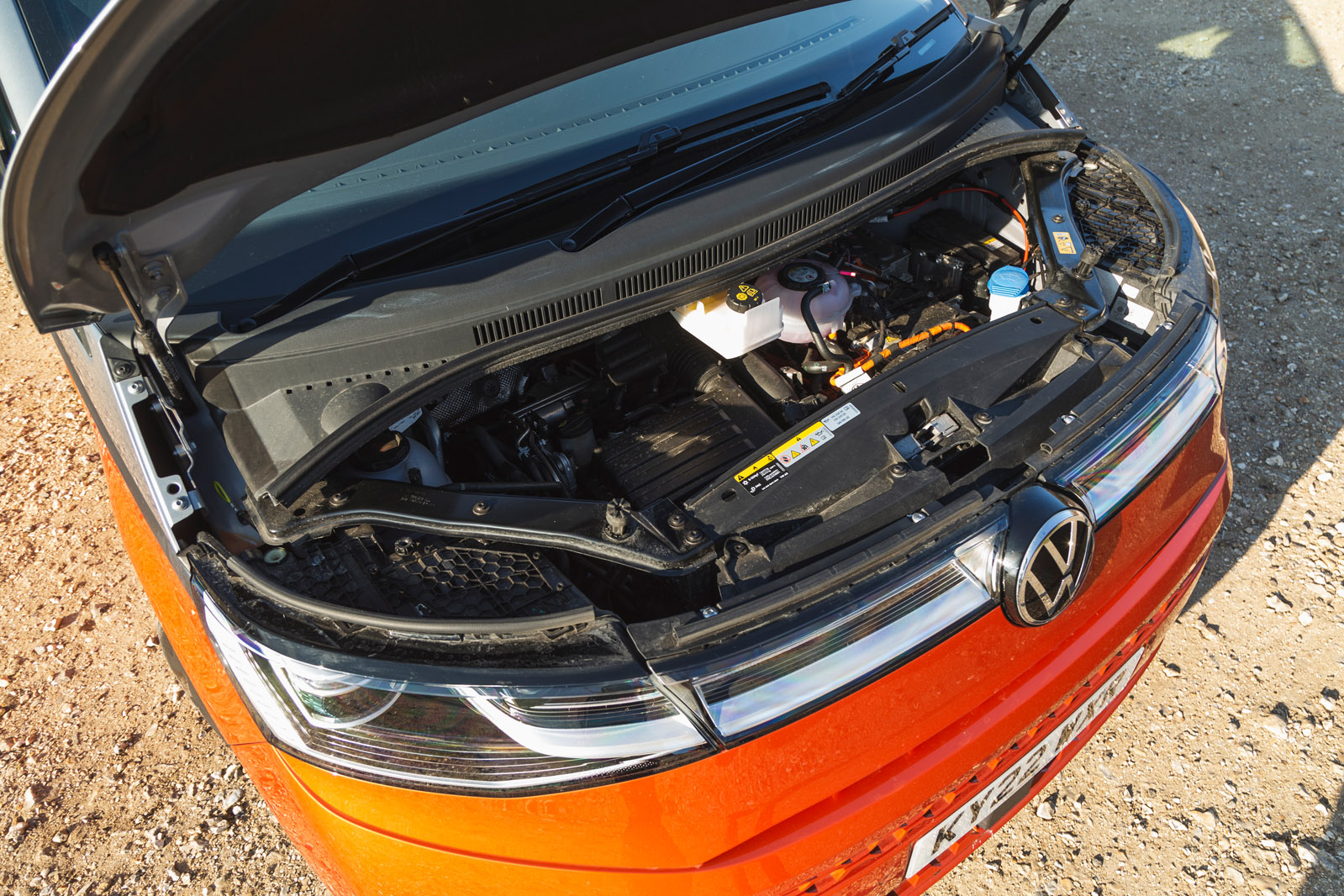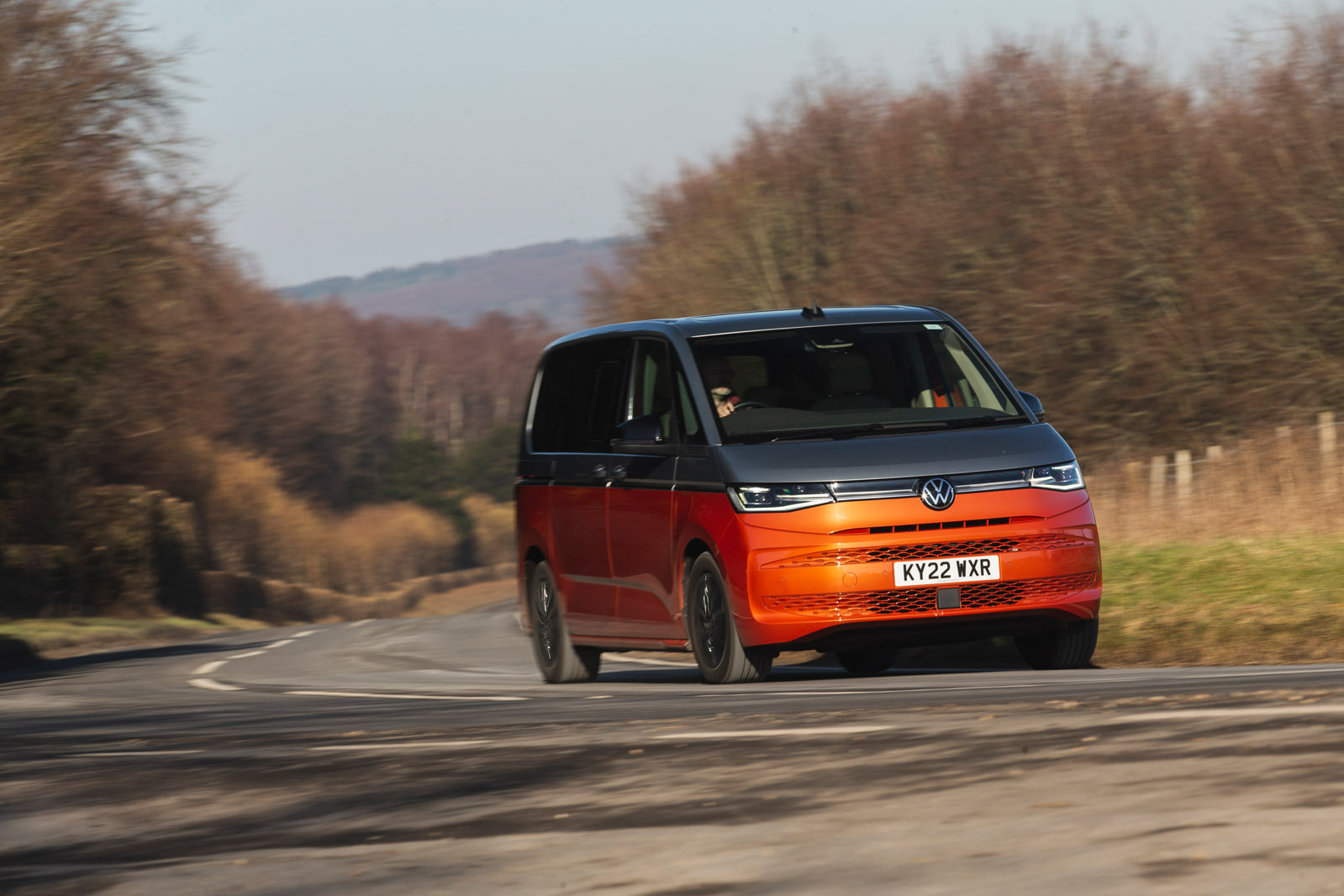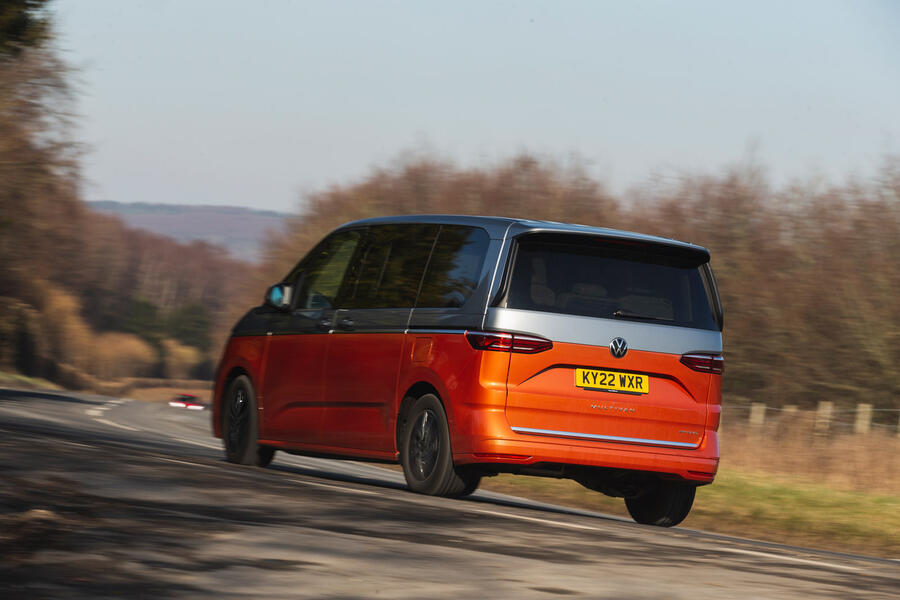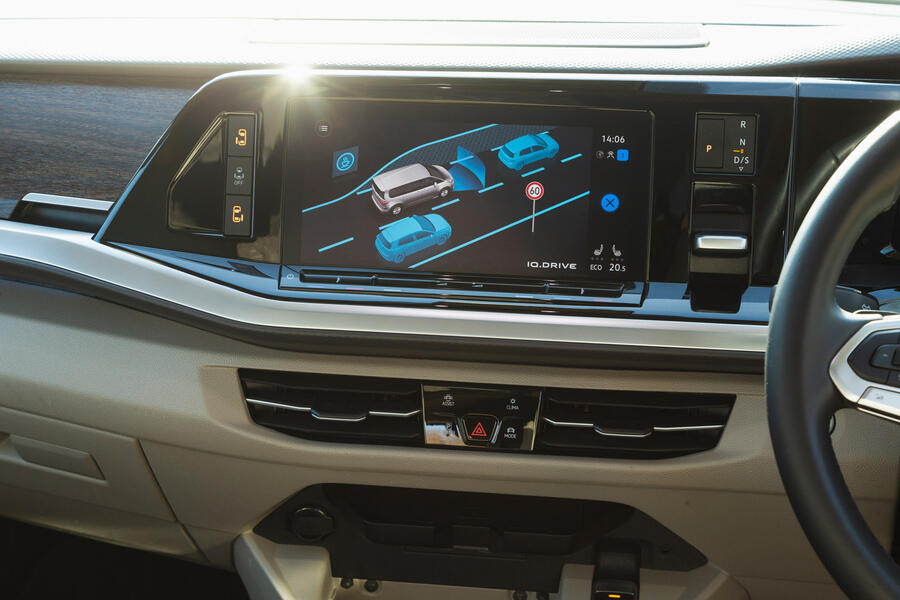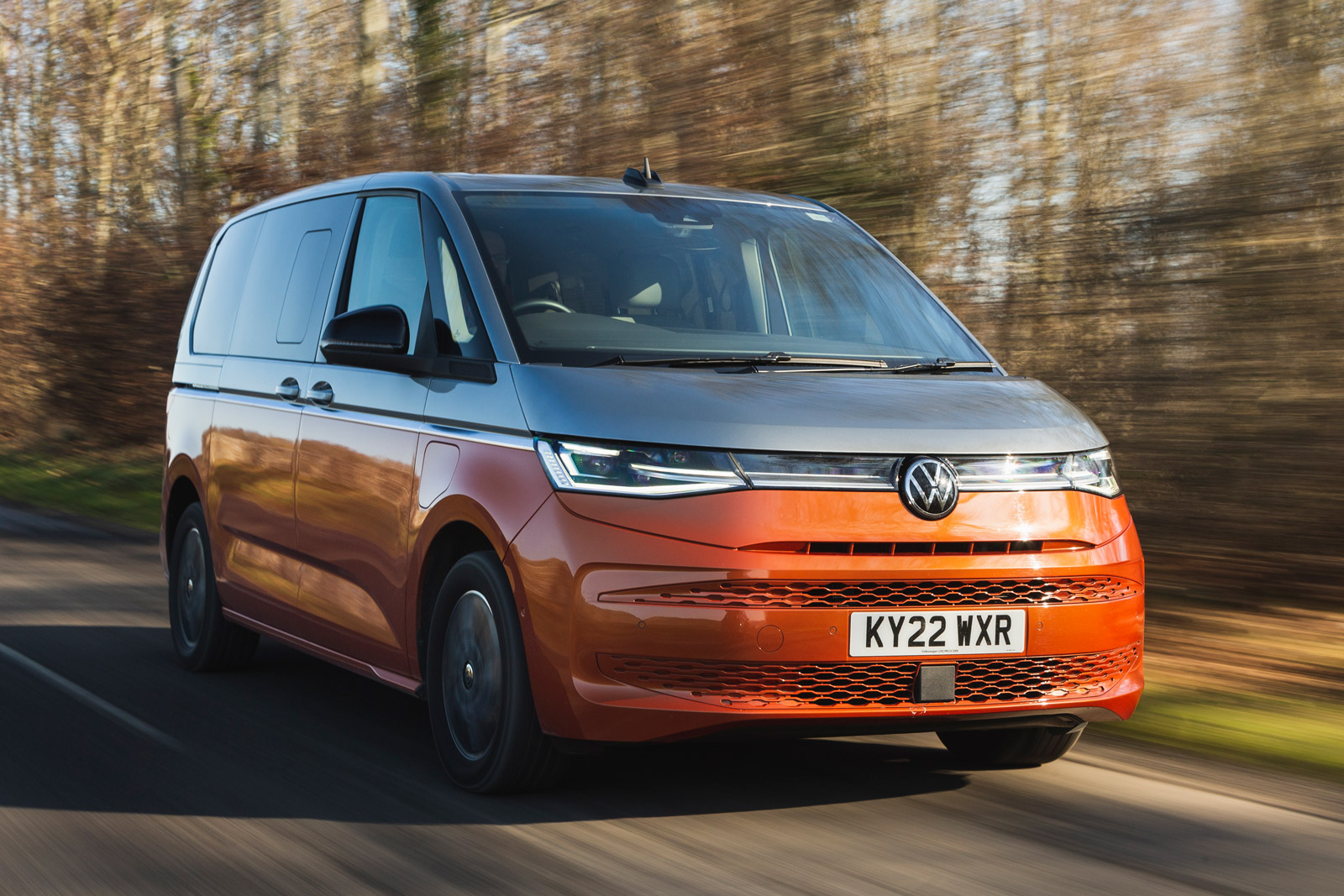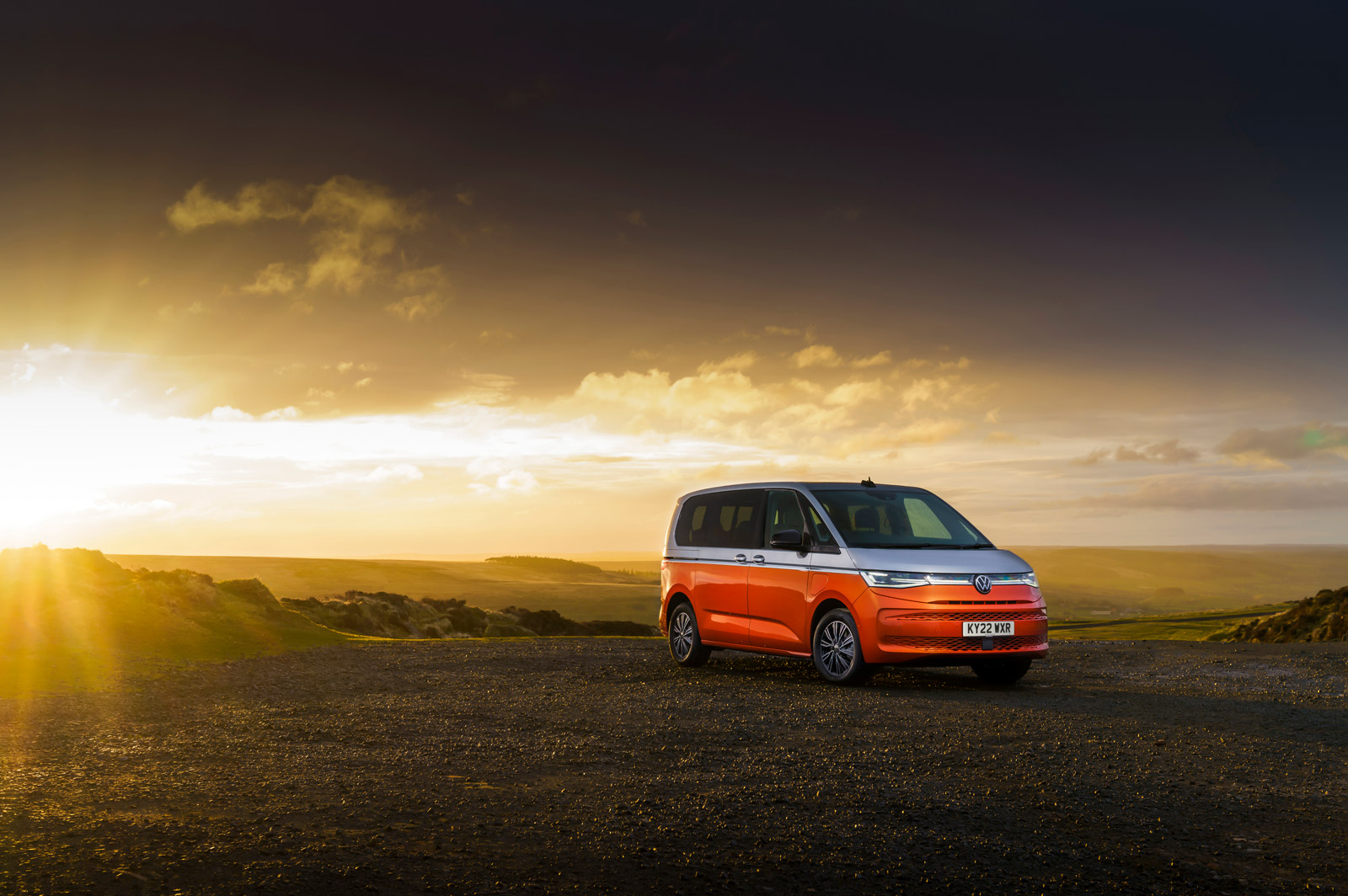Our Multivan is in its highest spec and has then had some more options added. But all variants get the same level of practicality and versatility – and it’s of the sort that evangelical owners will tell you you’ll never go back from.
Let’s start up front at the business end. There are two large broad chairs, electrically adjusted, with a relatively chilled upright driving position and a steering wheel at a conventional car-like angle. Most of this architecture’s hardware is sited between the driver’s seat and the front axle, and it is impressive that it’s flexible enough to sit in both a low saloon but also an almost two-metre-tall van that you step up into.
It’s very easy to get comfortable, there’s clear space around the seats because the gear selector is high on the dashboard and there’s a huge windscreen, albeit with wide metal around the A-pillar and quarterlight. The van’s sides are flat and the mirrors and windows are large, so it’s one of the easiest 5x2m cars to wield around tight car parks.
Material fit and finish is high – light surfaces, going heavy on carpet or soft feel, and even an approximation of wood across the dashboard. But, then, the before-option price is nearly £60,000, which will bring an expectation that you’re not just paying for the space inside it.
Storage space up front abounds. There is no shelf by the roof in which to lose reams of paperwork, but each door has two pockets and there are two gloveboxes and fold-down cupholders on the dash with a device tray above. Then there’s a sliding console that can be dragged to between the seats that has more storage, or can be used as an armrest – although each front seat gets a pair of those anyway.
The rear of the cabin is as you want to make it. It is carpeted and there are three pairs of rails running the length of the 2300mm volume. Our test car has five seats back here, but you can spec fewer. They all remove (but, at 15kg or so, they’re not light), as does that storage cubby, which can be raised and has fold-out tables in its top. You can place the seats either way around, and then they slide the length of the rails too. So if you want just four chairs back there as an office away from home or executive transport seated around a table, all facing each other, fill your boots. Or you can pile in all the seats and a herd of kids.
As a result of that flexibility, we have not listed minimum/maximum rear leg room measurements because you can have none or, with legs extending between the front seats, nearly three metres of it. But if you have the driver’s seat in a typical position, both rows two and three can have 715mm of leg room with still a small boot behind. Even with the front chair as far back as it will go, there’s 660mm for rear occupants.
Behind the third row there’s a luggage shelf and, with that in place and the seats in front of it, 469 litres of space back there. That extends to 1844 litres behind a second row in a fairly typical position, with a maximum space of 3672 litres with all the seats out (4053 litres in the longer version). As importantly, the minimum width of the tailgate opening is 1200mm, and its height 1160mm. The side doors open broadly, too, with a low step just inside them, and give great access.
There are two things to note. There isn’t an underfloor cubby for the charge cable, so that will sit in there somewhere. And all but the centre-rear chair is right- or left-handed, so you will have to put them in their correct side to ensure seatbelts – mounted to the chassis, not the seats – sling across them properly.
Multimedia
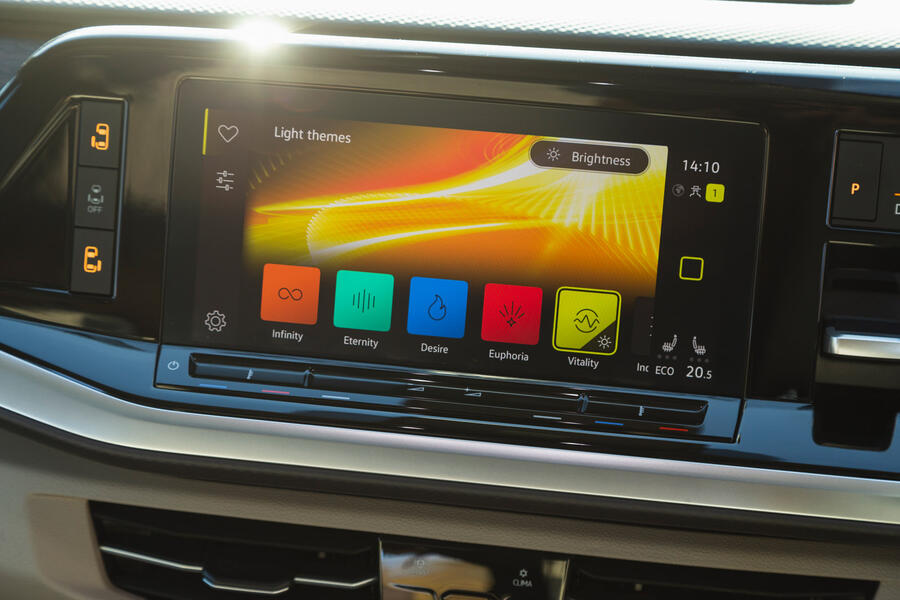
Volkswagen’s infotainment system – and particularly its heating and ventilation controls – is among the most annoying in the business. That’s especially true of this latest-generation set-up, given the heating and volume controls are both sited just where you would want to rest your palm to touch the screen. So you end up bracing your fingers on the dash or the screen top like you’re playing a particularly tricky snooker shot. And those buttons don’t light up in the dark.
If you want to adjust the heated seat, you push the heated seat (or climate) button, which opens up another menu. So while the icons are big and the driving assistance graphics are cute, and you can change the interior colours through a few sweet choices, it’s a fiddle to use overall. We suspect many will wind up mirroring their smartphones.


